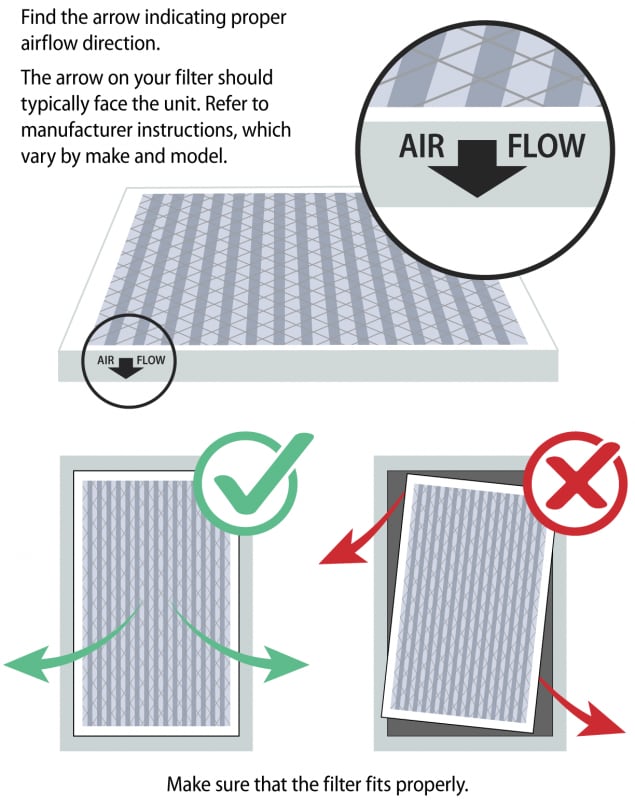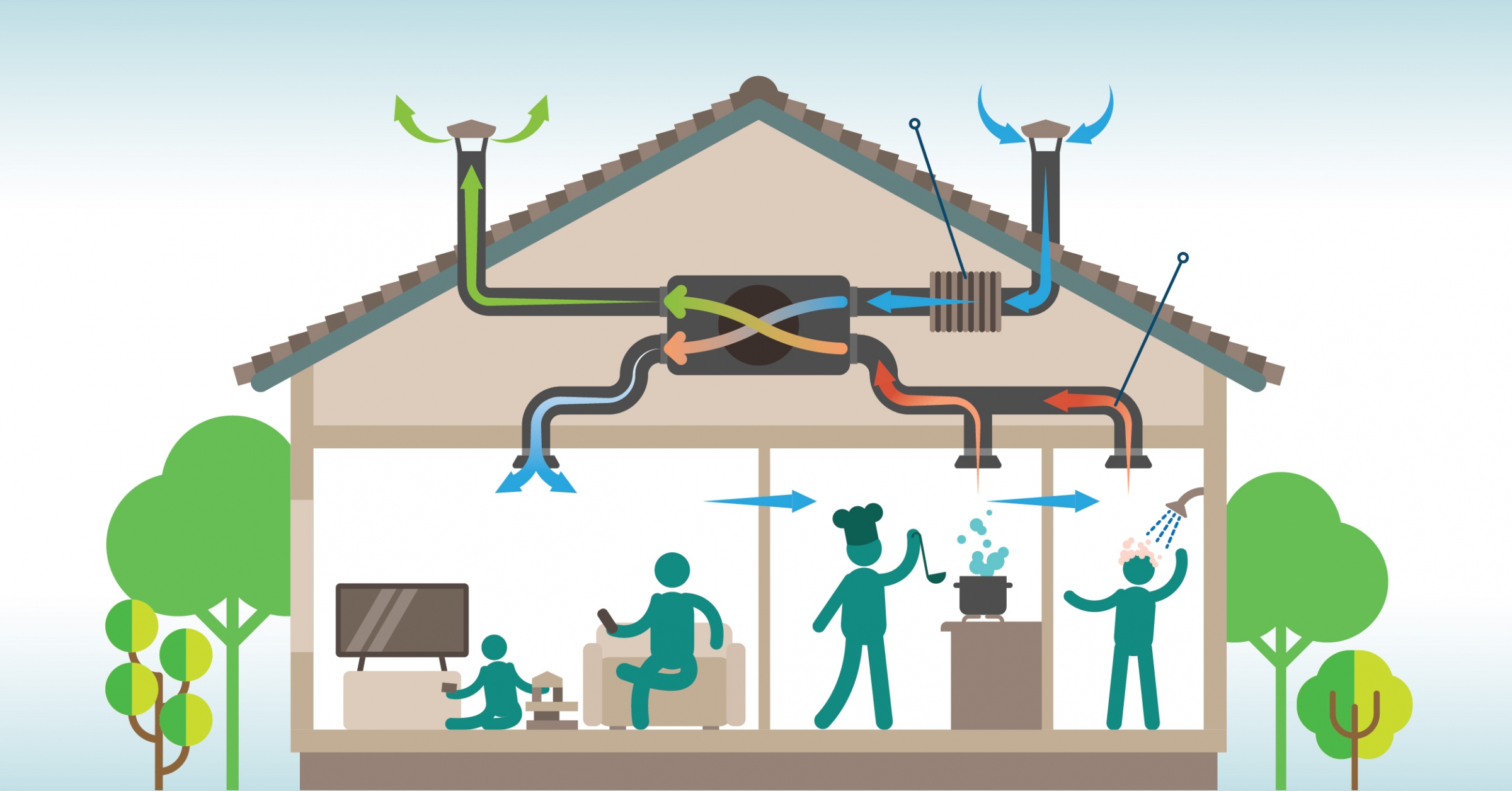Recognizing the Value of Home Air Flow for a Healthier Living Setting
Home ventilation plays an essential role in maintaining a healthy living setting. It helps with the exchange of indoor and outdoor air, which is very important for boosting air quality. Without correct ventilation, homes can come to be breeding grounds for irritants and toxins. The repercussions of poor air blood circulation can be considerable. This brings up the questions of how property owners can properly implement air flow strategies to protect their health and wellness and wellness. Recognizing these approaches is important.

The Fundamentals of Home Air Flow
Home air flow offers as a crucial element of interior air quality and comfort. It includes the procedure of trading stagnant indoor air with fresh exterior air, thus minimizing humidity and managing temperature level. Correct ventilation systems can include all-natural techniques, such as open home windows and vents, in addition to mechanical systems, such as exhaust fans and air exchangers. Efficient home air flow assists prevent problems like interior mold development and the accumulation of hazardous bits. It additionally boosts total energy performance, as well-ventilated rooms can maintain comfy temperature levels with much less reliance on home heating and cooling down systems. Recognizing the basics of home ventilation is essential for homeowners seeking to produce a much healthier living environment on their own and their households.

Typical Sources of Indoor Air Pollution

Although lots of may not realize it, indoor air pollution can stem from various sources within a house. Typical factors consist of unstable natural substances (VOCs) released from paints, solvents, and cleaning products. House devices, such as gas ranges and fireplaces, can launch hazardous gases like carbon monoxide and nitrogen dioxide. Additionally, mold and mildew thrive in damp areas, releasing spores that affect air high quality. Pet dander, dust mites, and pollen can gather inside your home, further intensifying pollution levels. Smoking cigarettes inside generates harmful chemicals that remain airborne. Ultimately, building products, consisting of asbestos and formaldehyde, can off-gas dangerous substances. Identifying these sources is crucial for maintaining a healthier indoor setting and promoting efficient air flow approaches.
Wellness Effects of Poor Ventilation
Interior air contamination can have considerable health ramifications, specifically when ventilation is inadequate. Poor ventilation can bring about the accumulation of dangerous contaminants, such as volatile natural compounds, mold and mildew, and particle issue. This build-up might lead to respiratory problems, including bronchial asthma, allergic reactions, and chronic obstructive lung disease. Individuals might experience symptoms like frustrations, exhaustion, and irritation of the eyes, nose, and throat. Susceptible populations, such as children and the elderly, go to greater threat for serious health and wellness impacts. Lasting exposure to badly ventilated settings can also add to a lot more significant conditions, including cardio illness. Ensuring correct air flow is crucial for keeping a healthy and balanced living setting and reducing the danger of wellness complications linked with indoor air pollution.
Effective Air Flow Approaches for Your Home
Appropriate ventilation is vital for preserving a healthy interior atmosphere, and applying effective strategies can considerably improve air quality. Home owners can start by guaranteeing that exhaust followers are mounted in washrooms and kitchens to get rid of excess wetness and smells. Opening up home windows on a regular basis permits fresh air to circulate, especially during light climate. In addition, making use of air cleansers with HEPA filters can help capture airborne contaminants. For homes with home heating and cooling down systems, keeping cooling and heating systems and transforming filters frequently is important for peak efficiency. Incorporating all-natural air flow techniques, such as cross-ventilation, can additionally enhance air movement. Securing any leaks in home windows and doors protects against undesirable drafts, which can disrupt regulated air flow, ultimately leading to improved interior air top quality and comfort.
Keeping Optimum Air Quality Year-Round
To keep perfect air top quality year-round, property owners need to index adopt a positive technique to handling their indoor environment. Frequently monitoring interior air high quality is critical; this consists of monitoring for toxins such as dirt, mold and mildew, and unpredictable natural substances (VOCs) Applying reliable air flow systems, such as exhaust fans and air cleansers, can substantially lower air-borne impurities. In addition, regular upkeep of a/c systems assurances peak performance and air circulation. Property owners should also consider moisture levels, as extreme moisture can lead to mold and mildew growth. Seasonal modifications may necessitate changes in ventilation strategies to accommodate differing outside air quality. By focusing on these practices, house owners can create a much healthier home, promoting general wellness for all occupants throughout the year.
Regularly Asked Concerns
How Can I Inform if My Home Requirements Better Air Flow?
To identify if a home requires far better air flow, one must observe signs such as relentless moisture, mold and mildew development, moldy smells, sites condensation on windows, or increased allergy symptoms, showing insufficient air movement and potentially inadequate interior air quality.
What Are the Indications of Poor Indoor Air Quality?

Can Houseplants Improve Indoor Air Top Quality Efficiently?
The performance of houseplants in boosting indoor air top quality is discussed. While some researches recommend they can take in contaminants and produce oxygen, their general impact might be very little contrasted to proper ventilation and air purification systems.
Exactly how Commonly Should I Change My Air Filters?
The frequency of air filter adjustments generally depends upon usage and filter type. Normally, it is advised to replace filters every three months, though families with allergic reactions or webpage pet dogs may call for even more frequent modifications for perfect efficiency.
Are There Any Type Of Certain Air Flow Systems for Allergy Sufferers?
Several ventilation systems, such as HEPA-filtered units, successfully lower irritants airborne. Home Ventilation Melbourne. These systems catch dust, pet dog, and plant pollen dander, giving allergic reaction victims with a cleaner, healthier interior setting while taking care of air top quality properly
It promotes the exchange of outdoor and indoor air, which is important for improving air quality. Home ventilation serves as an essential component of indoor air quality and comfort. It entails the process of exchanging stale indoor air with fresh outside air, thus decreasing humidity and controlling temperature. Interior air pollution can have significant wellness effects, specifically when ventilation is poor. Appropriate air flow is necessary for maintaining a healthy interior atmosphere, and applying effective techniques can substantially improve air quality.